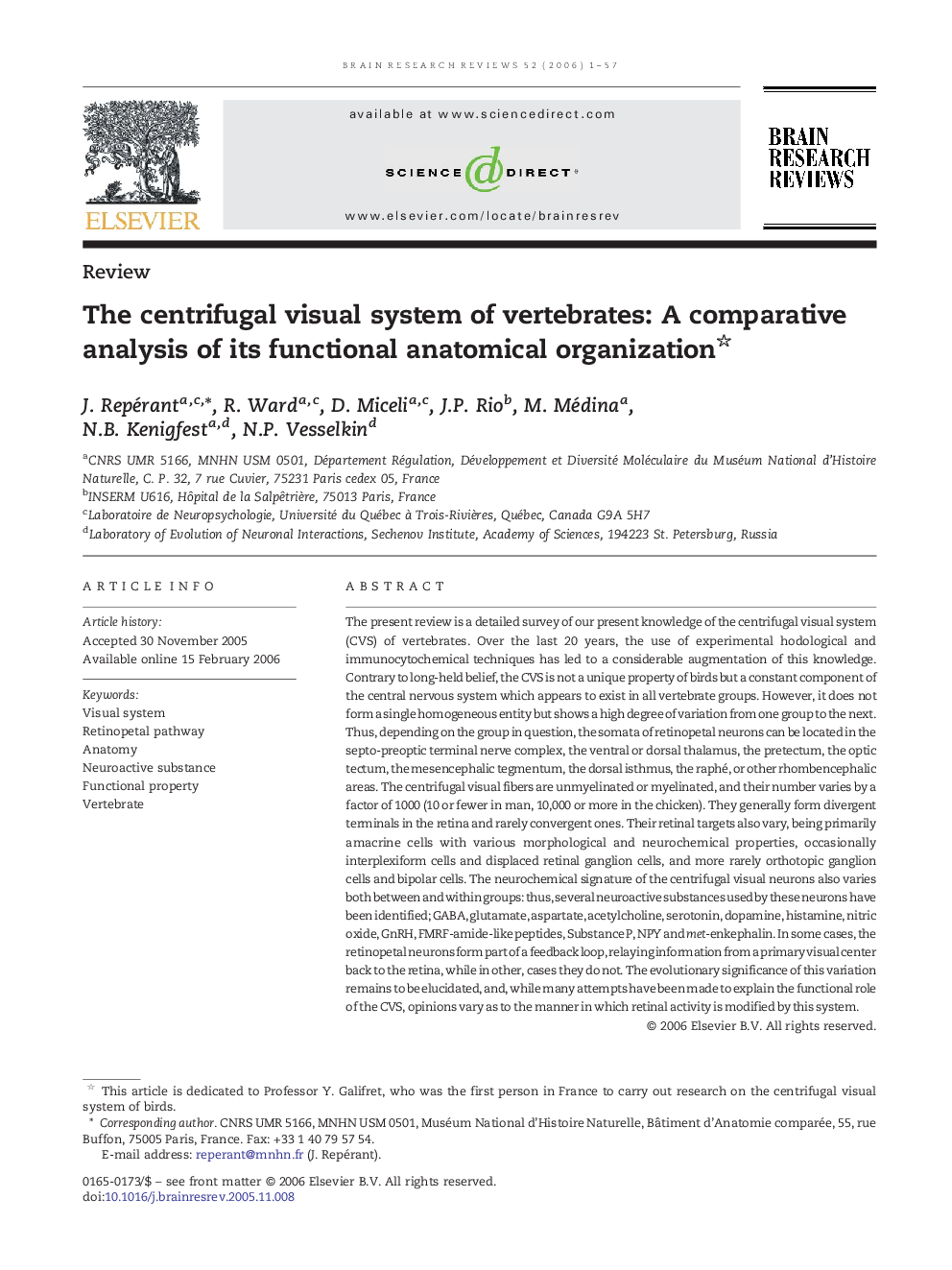| Article ID | Journal | Published Year | Pages | File Type |
|---|---|---|---|---|
| 4334009 | Brain Research Reviews | 2006 | 57 Pages |
The present review is a detailed survey of our present knowledge of the centrifugal visual system (CVS) of vertebrates. Over the last 20 years, the use of experimental hodological and immunocytochemical techniques has led to a considerable augmentation of this knowledge. Contrary to long-held belief, the CVS is not a unique property of birds but a constant component of the central nervous system which appears to exist in all vertebrate groups. However, it does not form a single homogeneous entity but shows a high degree of variation from one group to the next. Thus, depending on the group in question, the somata of retinopetal neurons can be located in the septo-preoptic terminal nerve complex, the ventral or dorsal thalamus, the pretectum, the optic tectum, the mesencephalic tegmentum, the dorsal isthmus, the raphé, or other rhombencephalic areas. The centrifugal visual fibers are unmyelinated or myelinated, and their number varies by a factor of 1000 (10 or fewer in man, 10,000 or more in the chicken). They generally form divergent terminals in the retina and rarely convergent ones. Their retinal targets also vary, being primarily amacrine cells with various morphological and neurochemical properties, occasionally interplexiform cells and displaced retinal ganglion cells, and more rarely orthotopic ganglion cells and bipolar cells. The neurochemical signature of the centrifugal visual neurons also varies both between and within groups: thus, several neuroactive substances used by these neurons have been identified; GABA, glutamate, aspartate, acetylcholine, serotonin, dopamine, histamine, nitric oxide, GnRH, FMRF-amide-like peptides, Substance P, NPY and met-enkephalin. In some cases, the retinopetal neurons form part of a feedback loop, relaying information from a primary visual center back to the retina, while in other, cases they do not. The evolutionary significance of this variation remains to be elucidated, and, while many attempts have been made to explain the functional role of the CVS, opinions vary as to the manner in which retinal activity is modified by this system.
